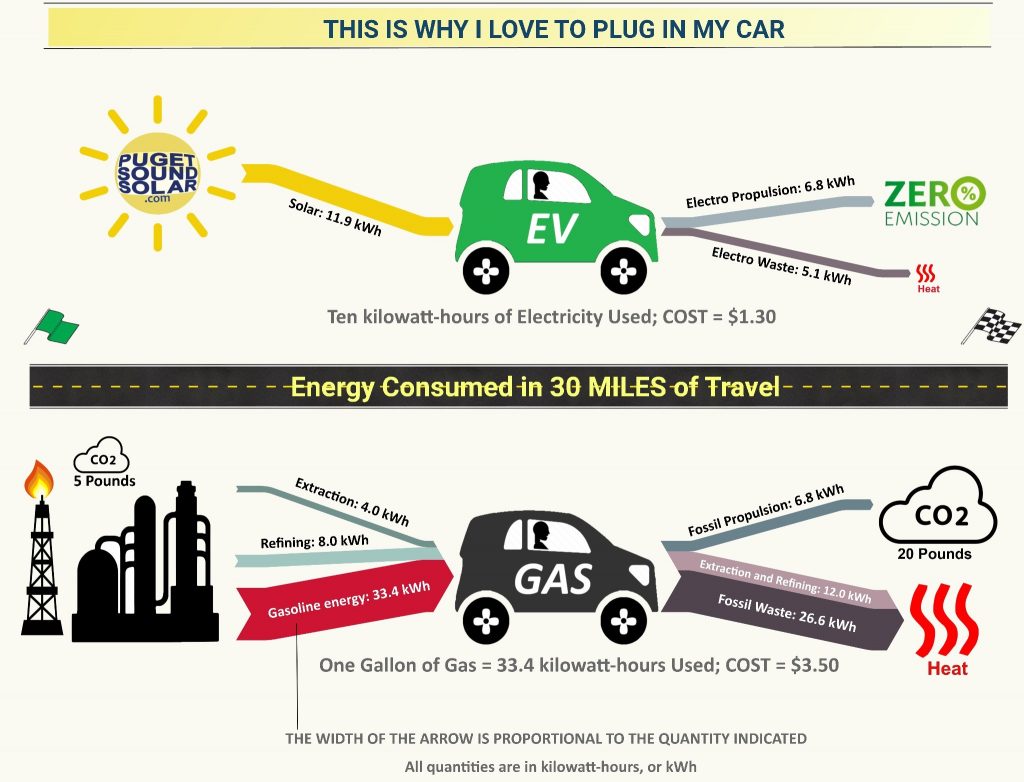Especially at home, where there is solar power.
An oft repeated question about electric vehicles is, “…yeah but don’t you have to plug it in?” Now, I won’t get started on the absurdity of the situation in which the person asking the question has to regularly plug their vehicle into a gas pump but will focus instead on the benefit package that comes with an EV.
I love plugging in my car for a lot of reasons, some of which have to do with avoiding the hazards of handling and breathing volatile hydrocarbons like gasoline, benzene, etc. at a gas station, but in this post I want to highlight the hidden economic power of plugging in. Let’s start with a ‘well-to-wheel’ look at the two types of car, each traveling the same 30 miles.

As you can see, there is an incredible amount of energy resource that is wasted by combustion, and that resource (gasoline) produces its own GHG emissions before it even gets to the car. The cost to the climate is high, at a total of between 23 – 28 pounds of CO2 per gallon burned, and most of the cost to the driver is wasted as heat.
How does the EV compare? To begin with, electric motors are 80-90% efficient, so the EV doesn’t require much input compared to the GAS car. This reduces the operating cost of the car by 63% in addition to lower maintenance costs, with fewer things to maintain (no oil changes, tune-ups, filter changes, exhaust systems, emissions controls, and on and on). Battery charging expends some energy, but the overall efficiency is four times that of the GAS car.
Let’s examine what happens to the $3.50 paid by the GAS car for a gallon of gasoline. According to our Department of Commerce, 75% of that, or $2.625 leaves the state. $0.875 stays here. The EV driver can buy power from their own solar power system, or can buy green power from their utility. In either case, the money stays here. The 43,000 plug-in vehicles in Washington (as of 2018) are keeping some $30,000,000 in the state every year and that number is growing.
So, there’s a great, big economic case to be made for electrifying as much fossil-fired transportation as possible. If just one tenth of all vehicles in Washington were electric it would keep $250 Million from fleeing the state, and it would bolster the market for clean power. This must certainly have the attention of the fossils, as they are not jumping into renewables yet. Shell is spending $3 Billion on projects, but that is a fraction of its annual capital spending of $25 Billion, so you know that they will try to postpone the inevitable. They know that once a person drives an EV, that person will also love plugging it in and will spread the word. Just as I am here.
